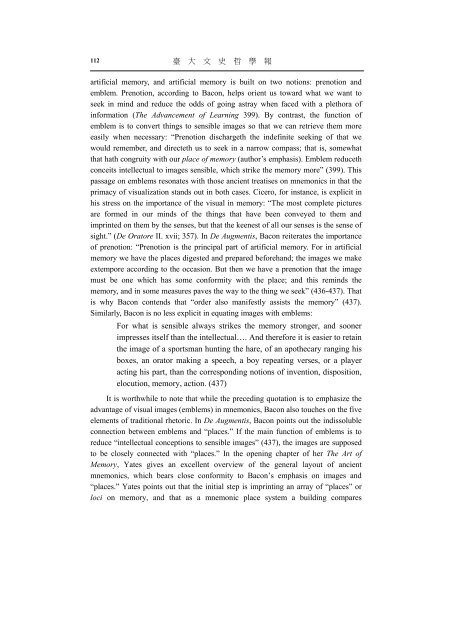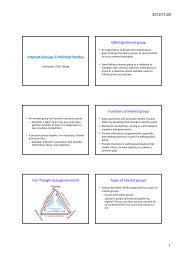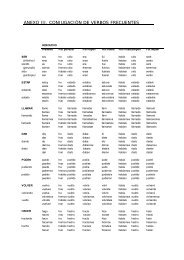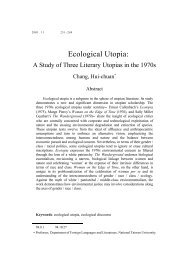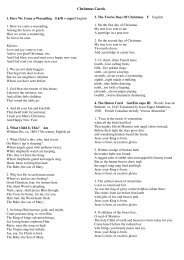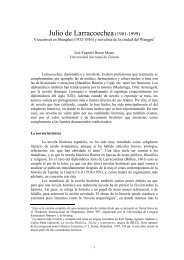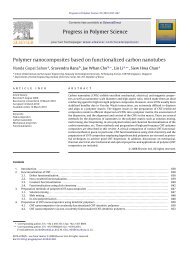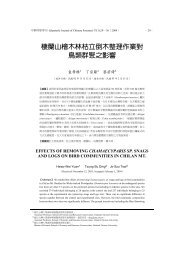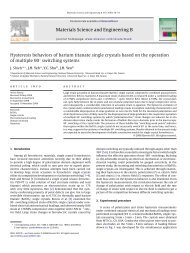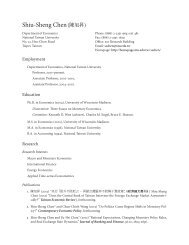Mnemonics and Bacon
Mnemonics and Bacon
Mnemonics and Bacon
You also want an ePaper? Increase the reach of your titles
YUMPU automatically turns print PDFs into web optimized ePapers that Google loves.
112<br />
臺 大 文 史 哲 學 報<br />
artificial memory, <strong>and</strong> artificial memory is built on two notions: prenotion <strong>and</strong><br />
emblem. Prenotion, according to <strong>Bacon</strong>, helps orient us toward what we want to<br />
seek in mind <strong>and</strong> reduce the odds of going astray when faced with a plethora of<br />
information (The Advancement of Learning 399). By contrast, the function of<br />
emblem is to convert things to sensible images so that we can retrieve them more<br />
easily when necessary: “Prenotion dischargeth the indefinite seeking of that we<br />
would remember, <strong>and</strong> directeth us to seek in a narrow compass; that is, somewhat<br />
that hath congruity with our place of memory (author’s emphasis). Emblem reduceth<br />
conceits intellectual to images sensible, which strike the memory more” (399). This<br />
passage on emblems resonates with those ancient treatises on mnemonics in that the<br />
primacy of visualization st<strong>and</strong>s out in both cases. Cicero, for instance, is explicit in<br />
his stress on the importance of the visual in memory: “The most complete pictures<br />
are formed in our minds of the things that have been conveyed to them <strong>and</strong><br />
imprinted on them by the senses, but that the keenest of all our senses is the sense of<br />
sight.” (De Oratore II. xvii; 357). In De Augmentis, <strong>Bacon</strong> reiterates the importance<br />
of prenotion: “Prenotion is the principal part of artificial memory. For in artificial<br />
memory we have the places digested <strong>and</strong> prepared beforeh<strong>and</strong>; the images we make<br />
extempore according to the occasion. But then we have a prenotion that the image<br />
must be one which has some conformity with the place; <strong>and</strong> this reminds the<br />
memory, <strong>and</strong> in some measures paves the way to the thing we seek” (436-437). That<br />
is why <strong>Bacon</strong> contends that “order also manifestly assists the memory” (437).<br />
Similarly, <strong>Bacon</strong> is no less explicit in equating images with emblems:<br />
For what is sensible always strikes the memory stronger, <strong>and</strong> sooner<br />
impresses itself than the intellectual…. And therefore it is easier to retain<br />
the image of a sportsman hunting the hare, of an apothecary ranging his<br />
boxes, an orator making a speech, a boy repeating verses, or a player<br />
acting his part, than the corresponding notions of invention, disposition,<br />
elocution, memory, action. (437)<br />
It is worthwhile to note that while the preceding quotation is to emphasize the<br />
advantage of visual images (emblems) in mnemonics, <strong>Bacon</strong> also touches on the five<br />
elements of traditional rhetoric. In De Augmentis, <strong>Bacon</strong> points out the indissoluble<br />
connection between emblems <strong>and</strong> “places.” If the main function of emblems is to<br />
reduce “intellectual conceptions to sensible images” (437), the images are supposed<br />
to be closely connected with “places.” In the opening chapter of her The Art of<br />
Memory, Yates gives an excellent overview of the general layout of ancient<br />
mnemonics, which bears close conformity to <strong>Bacon</strong>’s emphasis on images <strong>and</strong><br />
“places.” Yates points out that the initial step is imprinting an array of “places” or<br />
loci on memory, <strong>and</strong> that as a mnemonic place system a building compares


